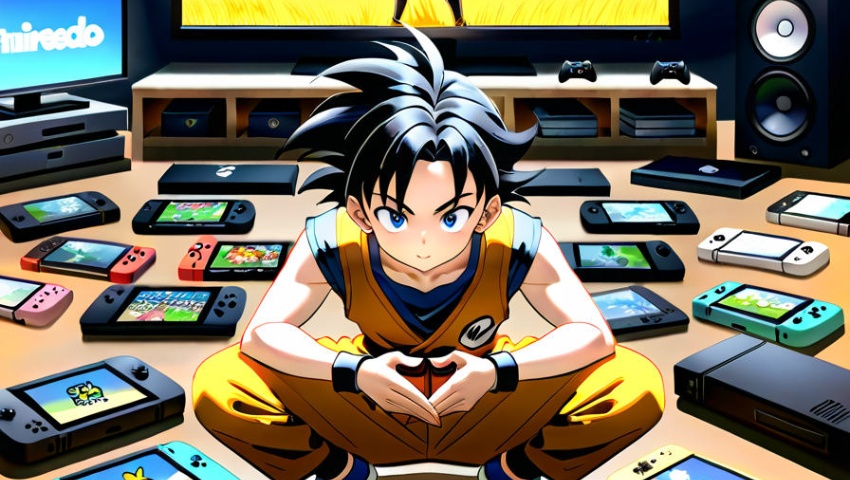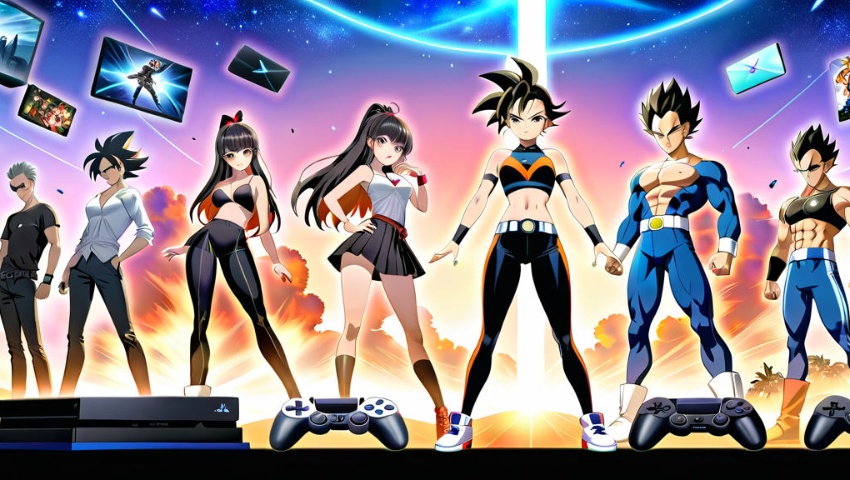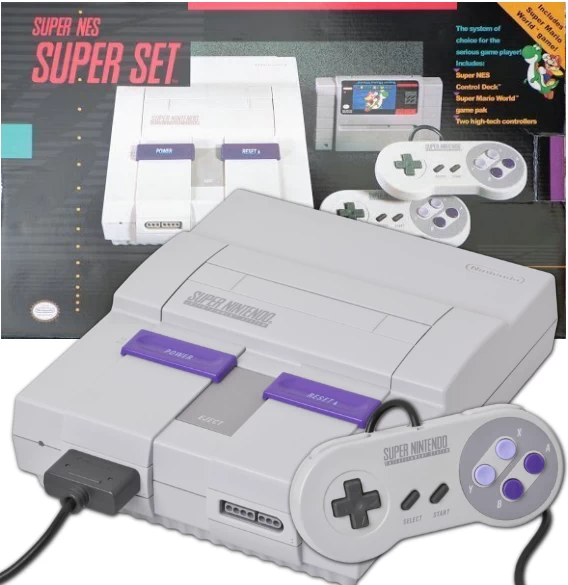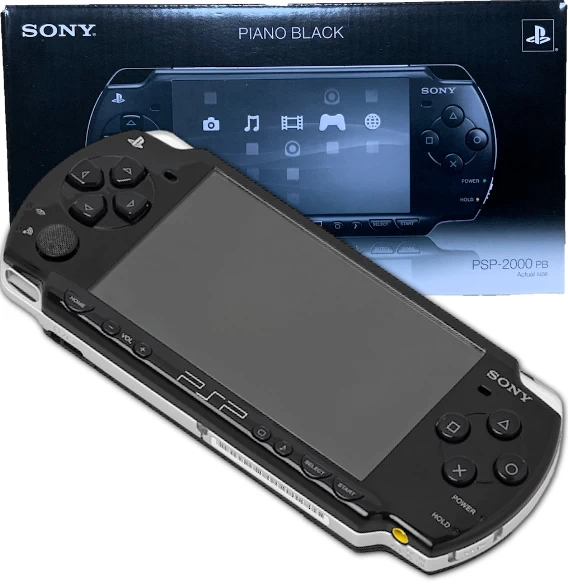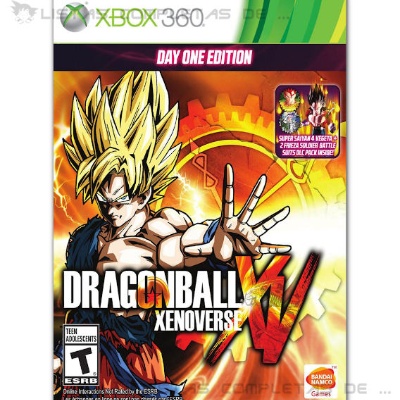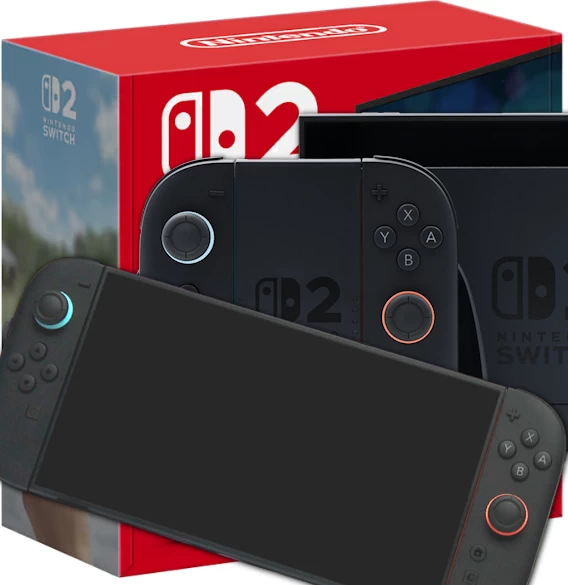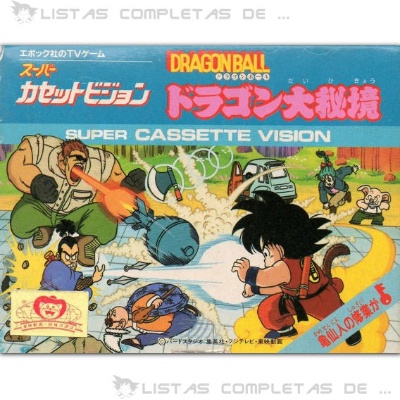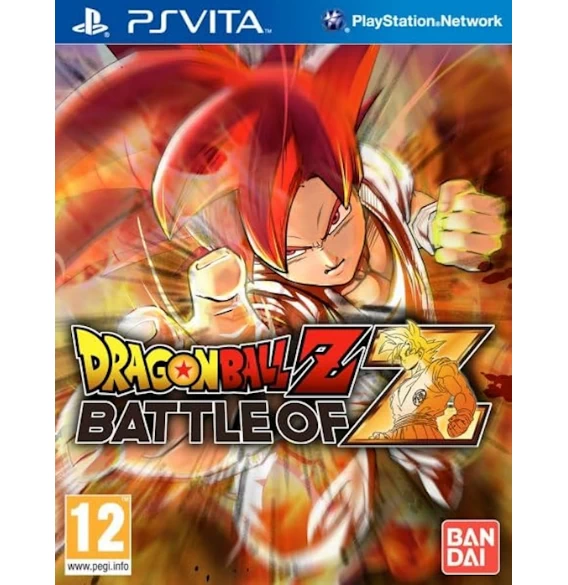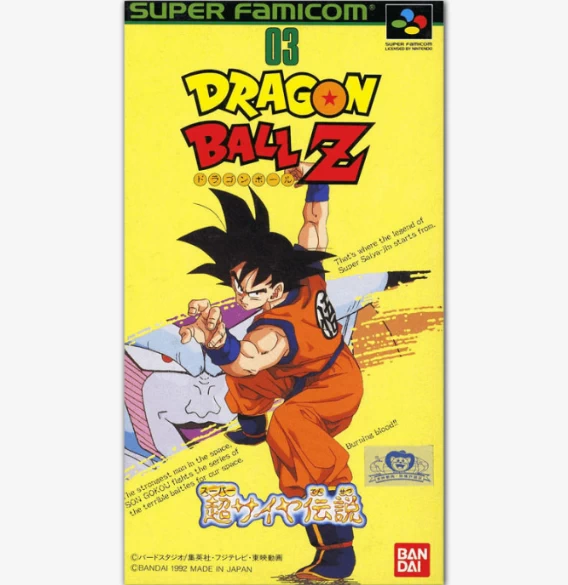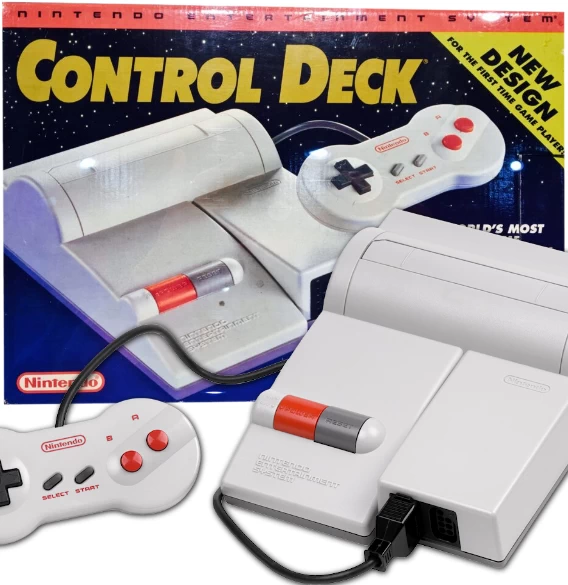Complete lists of Dragon Ball games and video games
Dragon Ball Video Games and Board Games, Listed and Categorized by genre, platform, and more.
Whether it's a board game, PC game, PlayStation, Game Boy, or even retro consoles, we've compiled a complete list of all the games available for each platform.
Within the world of video game collecting, Dragon Ball holds a very special place for many fans and collectors. Finding titles for recent platforms like Xbox, PC, or PlayStation is relatively easy, but the true treasures lie in discontinued consoles.
Here we’ve gathered lists of games released on those classic platforms, along with information and curiosities that make them unique within the history of the franchise.
Nintendo games and consoles
Nintendo has always featured Dragon Ball games, both on home consoles and handhelds. On home consoles (NES, SNES, GameCube, Wii, etc.), fighting and 3D adventure games predominated, while on handhelds (Game Boy, DS, 3DS) the focus was more on RPGs and tactical battles. The Switch combines both worlds: it can be played on TV or as a handheld, and hosts the latest titles like FighterZ, Xenoverse 2, or Kakarot. In short, the saga has always had a place on Nintendo, adapting according to the console and type of game.
Sony games and consoles
Sony has also had Dragon Ball games on almost all its consoles. On home consoles (PS1, PS2, PS3, PS4, PS5), fighting and 3D adventure games predominated, such as Budokai, Tenkaichi, or FighterZ. On handhelds (PSP, PS Vita), the focus was on more adapted versions of fighting and RPG games. Basically, the Dragon Ball saga has always been present on Sony, adapting according to the console and type of game.
Microsoft games and consoles
Microsoft has also had Dragon Ball games, although only on its home consoles. The original Xbox had few titles, mostly adaptations of classic fighting games. The Xbox 360 expanded the catalog with games like Budokai HD Collection and Raging Blast, while on the Xbox One and Series X/S, the latest titles arrived, such as FighterZ, Xenoverse 2, and Kakarot, all featuring modern graphics and online modes. In summary, the saga has always been present, but limited to Microsoft’s home consoles.
Sega games and consoles
SEGA also had a presence of Dragon Ball, although only on some of its consoles. On the Mega Drive / Genesis, classic 2D fighting games appeared, with simple battles that captured the essence of the series for the time. The Saturn had fewer titles but included more advanced fighting adaptations and some adventure games based on the saga. In summary, Dragon Ball was present on SEGA mainly with 2D fights and enhanced versions on the Saturn, but it was never as extensive as on Nintendo, Sony, or Microsoft.
Other consoles and their games
Other lesser-known consoles also had Dragon Ball games. The Super Cassette Vision received one of the first titles based on the series, very simple and limited by the technology of the time. The Playdia, from Bandai, featured several interactive games with videos and animated sequences, more like interactive movies than traditional games. Lastly, the TurboDuo (a version of the PC Engine CD) had a fighting title with improved graphics and sound thanks to the CD format. In summary, these were consoles with little reach, but they marked the first Dragon Ball experiments in the world of video games.
PC games
Since Dragon Ball Online, the PC began to have a real presence in the saga. Later came Xenoverse, FighterZ, and Kakarot, featuring better graphics, online modes, and more content. Today, the PC is the most complete way to play Dragon Ball if you’re looking for quality and performance.
Mobile games
Dragon Ball games for mobile started simple, but with Dokkan Battle and Legends they became complete, featuring battles, online events, and constant updates. They are an easy and active way to enjoy the saga.
Some of the Dragon Ball Games and Video Games we have for you:
Dragon Ball: RPG
Dragon Ball: RPG
Dragon Ball: RPG is one of the first games released for Android and iOS mobile devices. It is an RPG adventure game where we go through the entire Dragon Ball story. Its gameplay is very similar to the classic Final Fantasy games. In 2010, it received an expansion that allows you to complete the story from the beginning to the end of DB and DBZ.
Super Nintendo (SNES - NTSC)
Super Nintendo (SNES - NTSC)
The SNES (USA) or Super Nintendo was the second home console with interchangeable cartridges released by Nintendo for the American market, replacing the Nintendo NES and surpassing it in every aspect.
This console has two sister versions: one Japanese and one European. In Europe, it was also called Super Nintendo or SNES, as in both regions it replaced the NES, the equivalent of the Japanese Famicom. However, while the Japanese and European versions shared the cartridge system and design (only the printed name and the electrical system changed), the U.S. version had a different design and cartridge system.
Regarding cartridge compatibility between regions, this console has a lockout chip and the physical limitation of the cartridges, since Japanese and European cartridges are smaller and only have 60 pins instead of 72 like the American cartridges. Therefore, to play an EU or JPN game, we need an adapter (which also bypasses the lockout chip), but no Dragon Ball games were officially released in the U.S.
Xbox
Xbox
The original Xbox was Microsoft’s first console, released in 2001. Unlike other consoles of its generation, such as the PS2 or GameCube, it had more powerful hardware, closer to a PC, allowing for better graphics and performance.
For Dragon Ball fans, although only Dragon Ball Z: Sagas was released, the 3D differences were noticeable: battles and environments appeared more fluid and loaded faster. Additionally, its robust design and Xbox Live compatibility made it special for enjoying online gaming and exploring the Dragon Ball worlds like never before.
Dragon Ball Z: Kakarot
Dragon Ball Z: Kakarot
Dragon Ball Z: Kakarot arrives as the first major 3D RPG with open-world elements and combat worthy of any fighting game. The base game tells the full story of Dragon Ball Z, from Raditz’s arrival to Majin Buu’s defeat, featuring stunning cutscenes and additional story content supervised by Akira Toriyama.
This is a single-player game designed in the style of Final Fantasy, with item gathering, crafting, ability upgrades, and a semi-open world to explore the Dragon World, complete side quests, and enjoy mini-games like fishing, baseball, and races.
Combat is similar to that of Xenoverse, but with the cinematic and fast-paced style typical of CyberConnect2 (known for their Naruto games). Its art style was unmatched at the time of release.
The game launched in 2020 in four editions: Standard, Deluxe, Ultimate, and Collector’s Edition.
It has received multiple Season Passes, adding content from the classic 90s movies, early Dragon Ball Super films, and even Dragon Ball Daima, among other additions.
Xbox Series X (1 TB Digital Edition)
Xbox Series X (1 TB Digital Edition)
The Xbox Series X (1 TB Digital Edition, Robot White) is one of the most recent versions of the Series X family, introduced in 2024 as a fully digital alternative to the standard model. It retains the same power and architecture as the standard Series X—12 TFLOPS, 4K native support, and ultra-fast load times—but removes the disc drive, focusing entirely on digital content with a refreshed Robot White design that is modern and elegant.
Compared to the Series S, this edition offers higher graphical power, more memory, and 4K performance, while maintaining digital-only gameplay. The main difference from the classic Series X is the lack of a Blu-Ray drive, making it ideal for players who purchase or download all their games online.
For Dragon Ball gamers, this console is a perfect way to enjoy titles like Dragon Ball Sparking! ZERO or FighterZ with maximum visual quality, without worrying about physical discs and with immediate access to all digital content in the saga.
PSP-2000 (Play Station Portable)
PSP-2000 (Play Station Portable)
The PSP-2000 (PlayStation Portable), also known in some regions as "PSP Slim & Lite", is the second version of the PSP. It is slimmer than the previous one, features a video output, improvements to the screen and RAM, and some bug fixes.
Dragon Ball Xenoverse (Day One Edition)
Dragon Ball Xenoverse (Day One Edition)
Dragon Ball Xenoverse is a special edition that includes additional game content, specifically a DLC to unlock Super Saiyan 4 Vegeta and two Frieza skins for your avatar.
Nintendo Switch 2
Nintendo Switch 2
The Nintendo Switch 2 is the console intended to replace the Switch 1, and it was released in summer 2025.
With a 7.9-inch display at 1080p and 120Hz, it greatly improves in size and quality compared to its predecessor. Its processor, sound, storage, and connectivity are improved in every aspect. Additionally, this console includes voice chat functionality and an extra USB-C port on top for accessories like the official camera.
The console is backward compatible with almost all Switch 1 games, allowing us to play all its Dragon Ball games.
Another novelty is the Joy-Con 2, which are new, larger controllers that connect magnetically and feature a "C" button for quick access to GameChat.
Also, the Joy-Cons, Pro Controller, and Hori Split Pad Pro from the Switch are compatible with the 2, but only wirelessly, as their physical connection slots differ.
Dragon Ball: Dragon Daihikyou
Dragon Ball: Dragon Daihikyou
Dragon Ball: Dragon Daihikyou is the first Dragon Ball video game ever released, exclusively for the Super Cassette Vision in 1986, the same year Dragon Ball premiered as an anime on Japanese TV.
It is a vertical-scrolling shoot ’em up / action game where players control Goku, flying on the Flying Nimbus while progressing through levels, defeating enemies, collecting items, and facing bosses at the end of each stage.
Although its graphics were simple and colorful, with large but minimally detailed sprites—typical of the console and era—the difficulty was high, mainly due to limited controls and fast enemies.
The game was released only in Japan and is considered more historically significant than for its gameplay quality; Dragon Ball fans value it as a collectible piece.
Dragon Ball Z: Battle of Z
Dragon Ball Z: Battle of Z
Dragon Ball Z: Battle of Z is the only game dedicated exclusively to DBZ released for this console. It also had versions for PS3 and Xbox. The game allows you to use up to 70 different characters, includes a multiplayer mode for up to 4 players, and its story mode covers the entire Dragon Ball Z saga, from the Saiyans to Boo.
Dragon Ball Z: Super Saiya Densetsu
Dragon Ball Z: Super Saiya Densetsu
Dragon Ball Z: Super Saiya Densetsu is the first Dragon Ball Z game released for the Super Nintendo and Super Famicom, although it only came out in the Japanese region in 1992.
It is a turn-based card battle RPG, where players explore the map to obtain new cards while progressing through the story and engaging in battles. Its story covers events from Raditz’s arrival to Frieza’s death on Namek.
As a fun fact, this game is actually a compilation port from NES to SNES of the games Dragon Ball Z: Kyōshū! Saiyajin (1990) and Dragon Ball Z II: Gekishin Freeza!! (1991) released for the Famicom in Japan. For more details, check the section with all Nintendo NES games.
Nintendo NES-101 (New Design / Top Loader / New Nes)
Nintendo NES-101 (New Design / Top Loader / New Nes)
The NES-101, or Nintendo Entertainment System New Design / Top Loader / New NES (yes, it had all those names), was the renewed version 9 years after the original NES, when the Super Nintendo was already on the market, featuring a redesign, keeping the colors, and with some improvements.
This edition or version was only sold in North America and Europe, and in Japan it was released a year earlier under a different Japanese name, being known as the AV Famicom. In addition, this version, unlike the original NES, does not include a chip to detect the game region, so games are compatible across the 3 regions. The differences between the NES-101 and the AV Famicom are: the box, the name, and the cartridges.
The console included 2 controllers that could be removed from the console. Their colors were gray, red, and white, and the cartridges were inserted from the top of the console. On the classic NES, they were inserted from the front. Remember that NES cartridges are larger and have more pins than those of the Japanese or Famicom versions, meaning that to use Japanese cartridges here, we will need an adapter.
As a novelty, its sound is now stereo instead of mono, and it has a more compact size.

